yu4u / Noise2noise
Programming Languages
Projects that are alternatives of or similar to Noise2noise
Noise2Noise
This is an unofficial and partial Keras implementation of "Noise2Noise: Learning Image Restoration without Clean Data" [1].
There are several things different from the original paper (but not a fatal problem to see how the noise2noise training framework works):
- Training dataset (orignal: ImageNet, this repository: [2])
- Model (original: RED30 [3], this repository: SRResNet [4] or UNet [5])
Updates:
- [Sep. 21, 2018] Random-valued impulse noise model and L0 loss were added
- [Aug. 25, 2018] UNet model can be used in training
- [Aug. 25, 2018] Add trained weights
Dependencies
- Keras >= 2.1.2, TensorFlow, NumPy, OpenCV
Train Noise2Noise
Download Dataset
mkdir dataset
cd dataset
wget https://cv.snu.ac.kr/research/VDSR/train_data.zip
wget https://cv.snu.ac.kr/research/VDSR/test_data.zip
unzip train_data.zip
unzip test_data.zip
cd ..
Any dataset can be used in training and validation instead of the above dataset.
Train Model
Please see python3 train.py -h for optional arguments.
Train with Gaussian noise
# train model using (noise, noise) pairs (noise2noise)
python3 train.py --image_dir dataset/291 --test_dir dataset/Set14 --image_size 128 --batch_size 8 --lr 0.001 --output_path gaussian
# train model using (noise, clean) paris (standard training)
python3 train.py --image_dir dataset/291 --test_dir dataset/Set14 --image_size 128 --batch_size 8 --lr 0.001 --target_noise_model clean --output_path clean
Train with text insertion
# train model using (noise, noise) pairs (noise2noise)
python3 train.py --image_dir dataset/291 --test_dir dataset/Set14 --image_size 128 --batch_size 8 --lr 0.001 --source_noise_model text,0,50 --target_noise_model text,0,50 --val_noise_model text,25,25 --loss mae --output_path text_noise
# train model using (noise, clean) paris (standard training)
python3 train.py --image_dir dataset/291 --test_dir dataset/Set14 --image_size 128 --batch_size 8 --lr 0.001 --source_noise_model text,0,50 --target_noise_model clean --val_noise_model text,25,25 --loss mae --output_path text_clean
Train with random-valued impulse noise
# train model using (noise, noise) pairs (noise2noise)
python3 train.py --image_dir dataset/291 --test_dir dataset/Set14 --image_size 128 --batch_size 8 --lr 0.001 --source_noise_model impulse,0,95 --target_noise_model impulse,0,95 --val_noise_model impulse,70,70 --loss l0 --output_path impulse_noise
# train model using (noise, clean) paris (standard training)
python3 train.py --image_dir dataset/291 --test_dir dataset/Set14 --image_size 128 --batch_size 8 --lr 0.001 --source_noise_model impulse,0,95 --target_noise_model clean --val_noise_model impulse,70,70 --loss l0 --output_path impulse_clean
Model architectures
With --model unet, UNet model can be trained instead of SRResNet.
Resume training
With --weight path/to/weight/file, training can be resumed with trained weights.
Noise Models
Using source_noise_model, target_noise_model, and val_noise_model arguments,
arbitrary noise models can be set for source images, target images, and validatoin images respectively.
Default values are taken from the experiment in [1].
- Gaussian noise
- gaussian,min_stddev,max_stddev (e.g. gaussian,0,50)
- Clean target
- clean
- Text insertion
- text,min_occupancy,max_occupancy (e.g. text,0,50)
- Random-valued impulse noise
- impulse,min_occupancy,max_occupancy (e.g. impulse,0,50)
You can see how these noise models work by:
python3 noise_model.py --noise_model text,0,95
Results
Plot training history
python3 plot_history.py --input1 gaussian --input2 clean
Gaussian noise
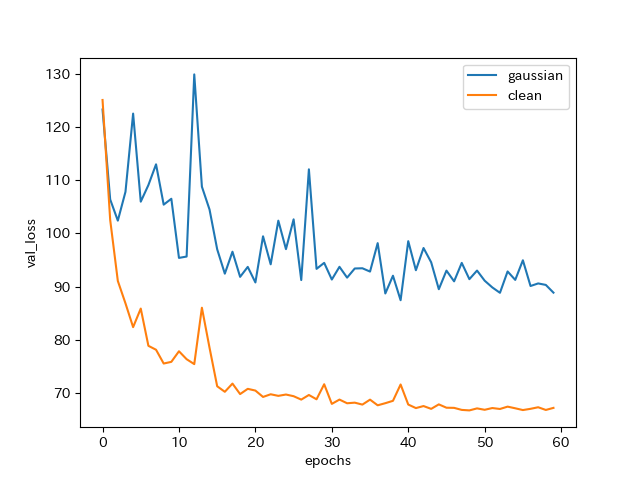
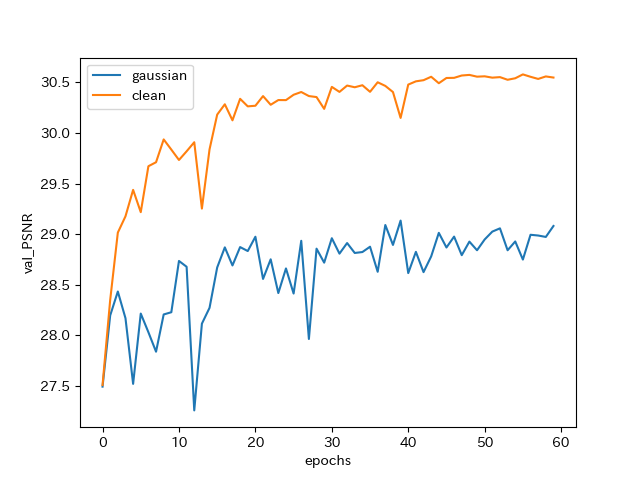
From the above result, I confirm that we can train denoising model using noisy targets but it is not comparable to the model trained using clean targets. If UNet is used, the result becomes 29.67 (noisy targets) vs. 30.14 (clean targets).
Text insertion
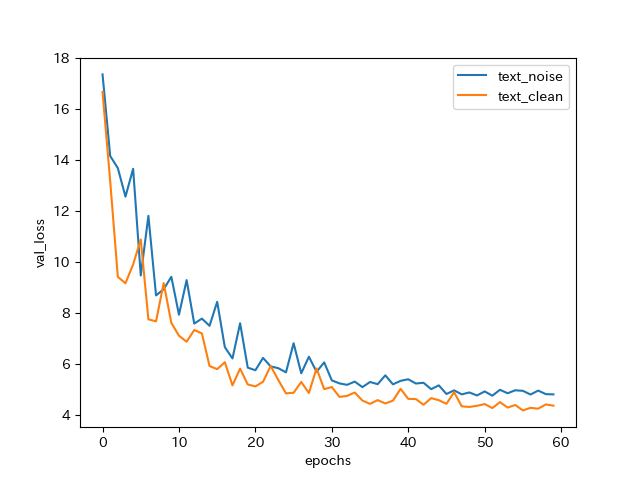

Random-valued impulse noise
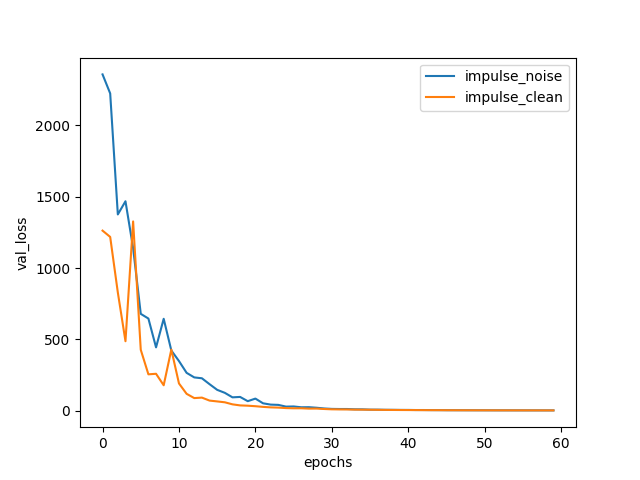
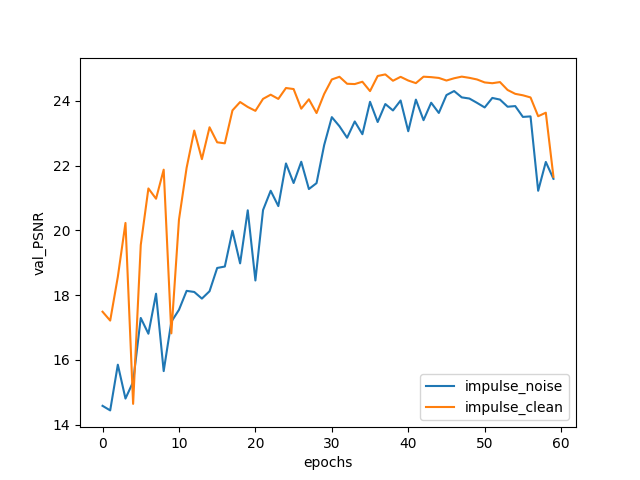
Check denoising result
python3 test_model.py --weight_file [trained_model_path] --image_dir dataset/Set14
The detailed options are:
optional arguments:
-h, --help show this help message and exit
--image_dir IMAGE_DIR
test image dir (default: None)
--model MODEL model architecture ('srresnet' or 'unet') (default:
srresnet)
--weight_file WEIGHT_FILE
trained weight file (default: None)
--test_noise_model TEST_NOISE_MODEL
noise model for test images (default: gaussian,25,25)
--output_dir OUTPUT_DIR
if set, save resulting images otherwise show result
using imshow (default: None)
This script adds noise using test_noise_model to each image in image_dir and performs denoising.
If you want to perform denoising to already noisy images, use --test_noise_model clean.
Gaussian noise
Denoising result by clean target model (left to right: original, degraded image, denoised image):
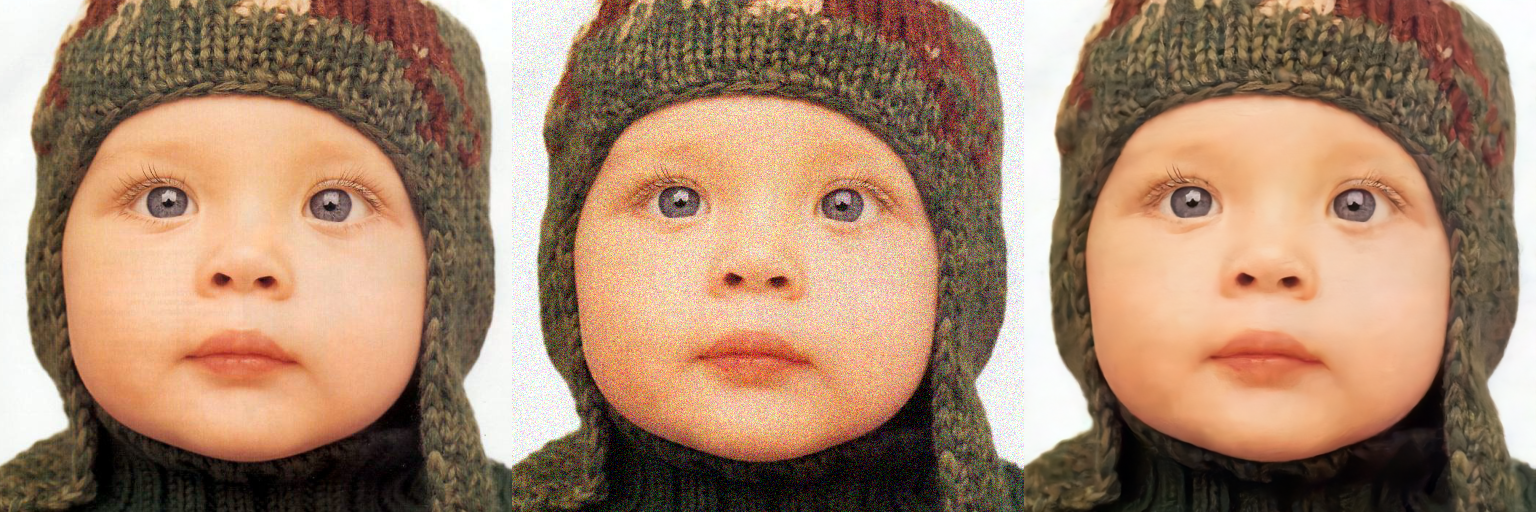
Denoising result by noise target model:
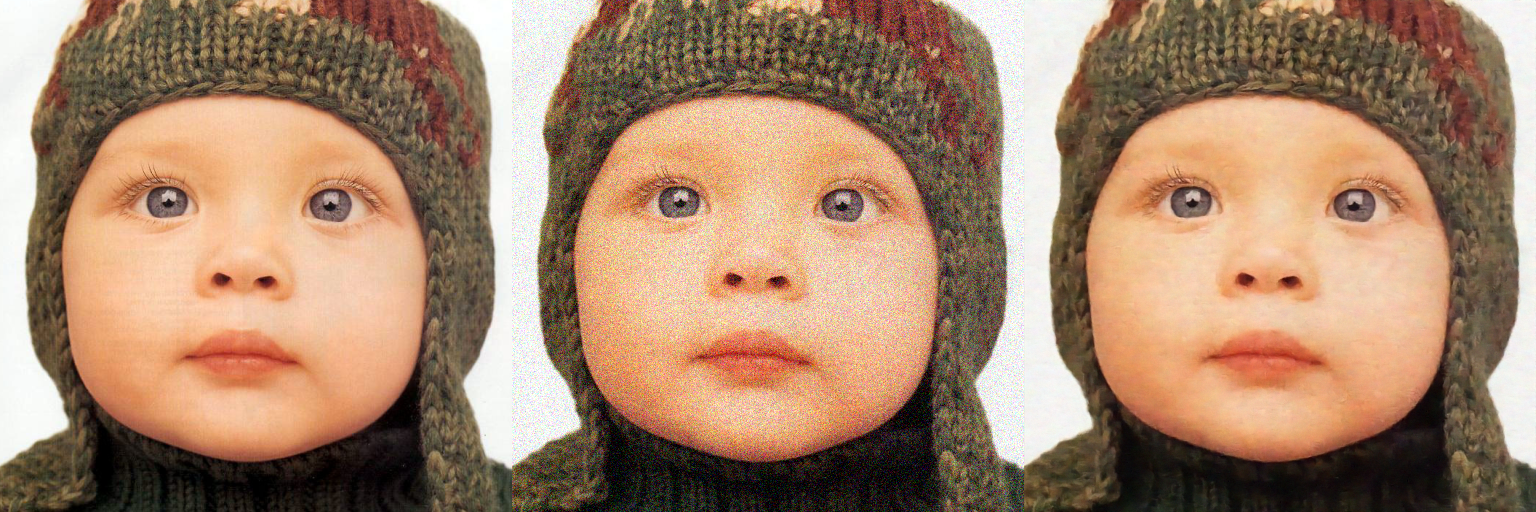
Text insertion
Denoising result by clean target model
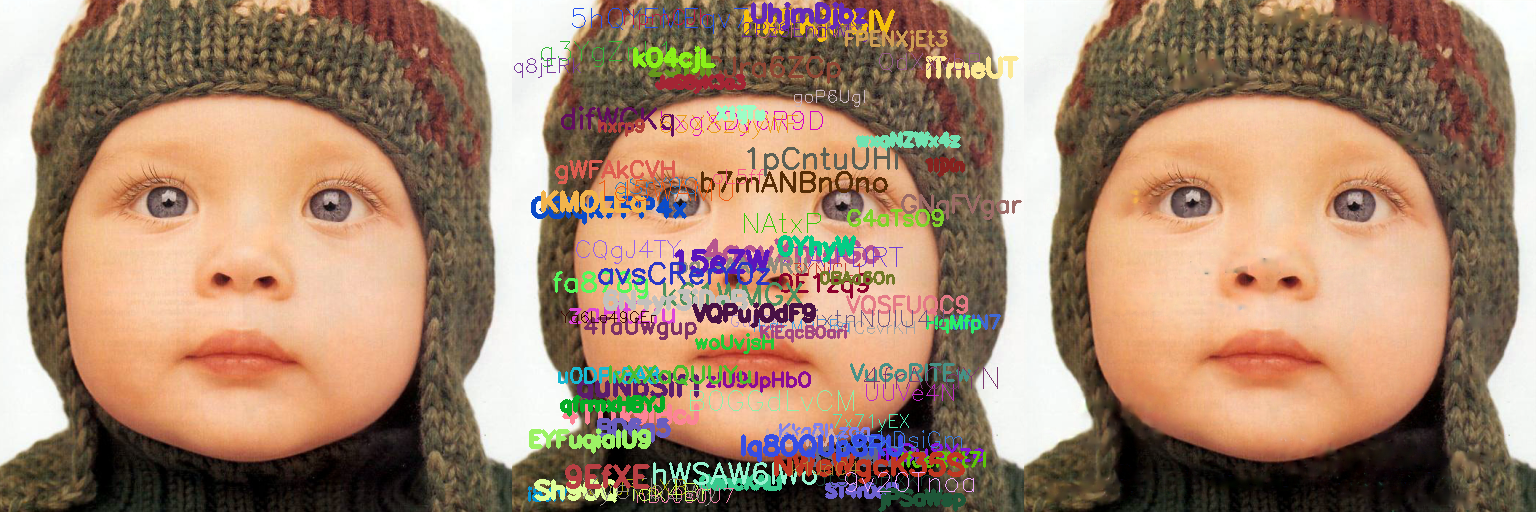
Denoising result by noise target model:
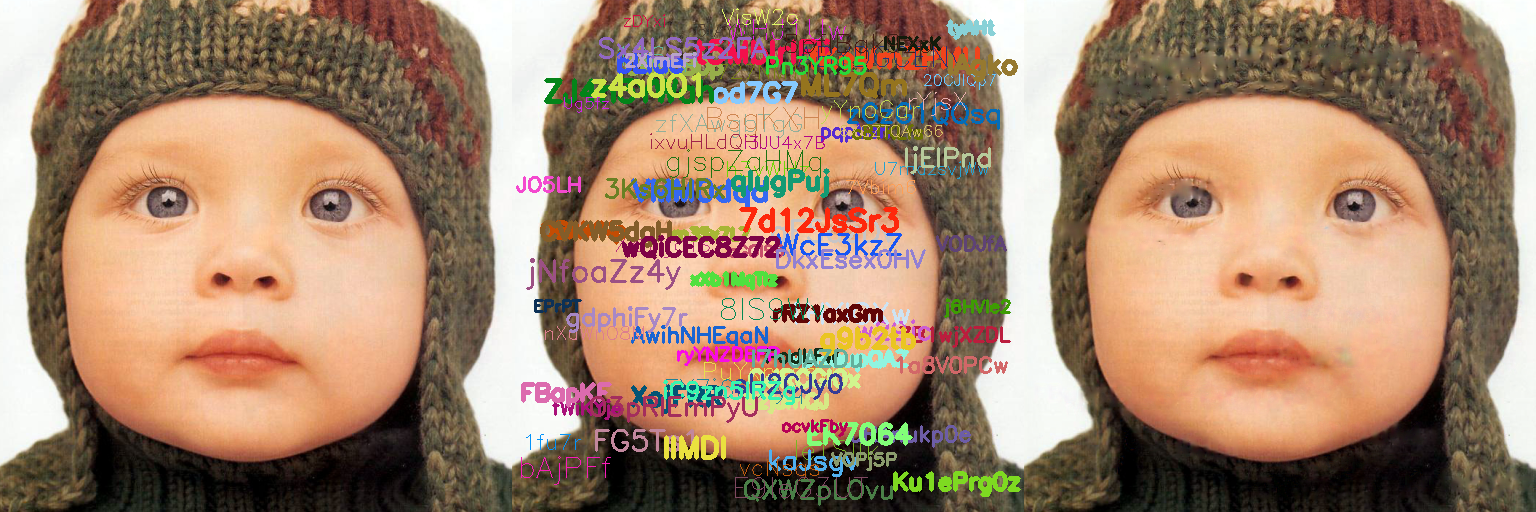
Random-valued impulse noise
Denoising result by clean target model
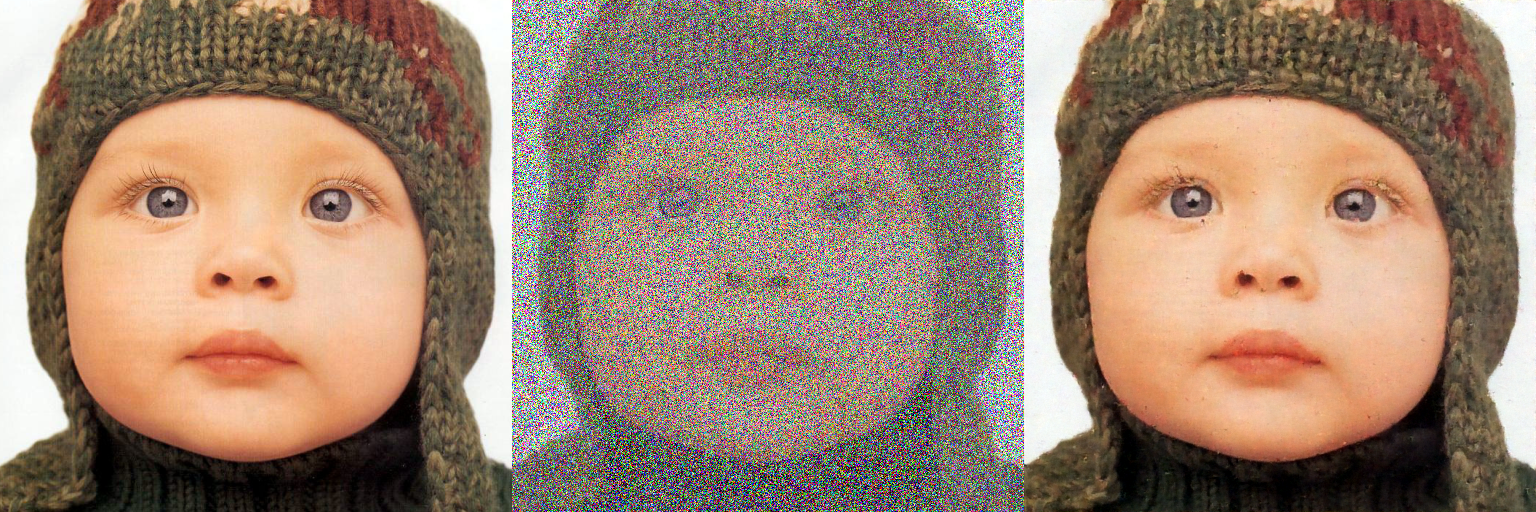
Denoising result by noise target model:
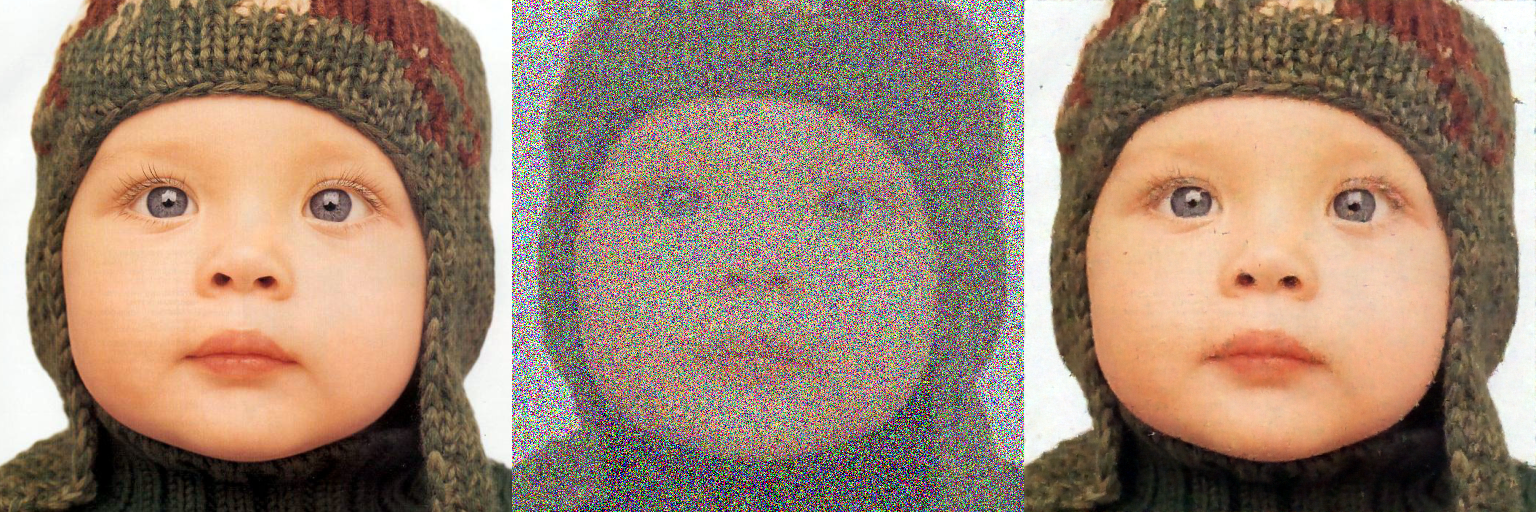
Trained weights
Random-valued impulse noise, noise target
Random-valued impulse noise, clean target
TODOs
- [x] Compare (noise, clean) training and (noise, noise) training
- [x] Add different noise models
- [x] Write readme
References
[1] J. Lehtinen, J. Munkberg, J. Hasselgren, S. Laine, T. Karras, M. Aittala, T. Aila, "Noise2Noise: Learning Image Restoration without Clean Data," in Proc. of ICML, 2018.
[2] J. Kim, J. K. Lee, and K. M. Lee, "Accurate Image Super-Resolution Using Very Deep Convolutional Networks," in Proc. of CVPR, 2016.
[3] X.-J. Mao, C. Shen, and Y.-B. Yang, "Image Restoration Using Convolutional Auto-Encoders with Symmetric Skip Connections," in Proc. of NIPS, 2016.
[4] C. Ledig, et al., "Photo-Realistic Single Image Super-Resolution Using a Generative Adversarial Network," in Proc. of CVPR, 2017.
[5] O. Ronneberger, P. Fischer, and T. Brox, "U-Net: Convolutional Networks for Biomedical Image Segmentation," in MICCAI, 2015.
